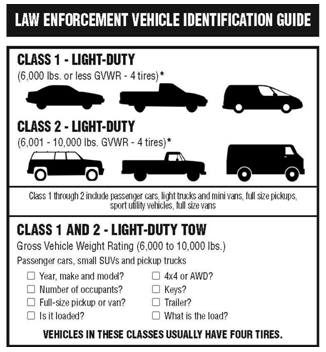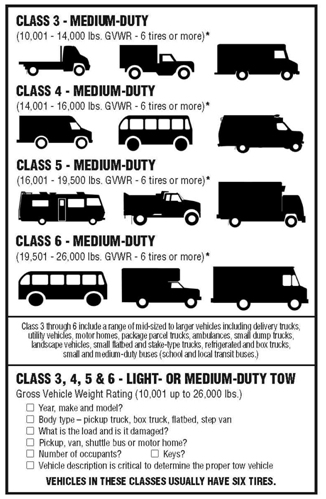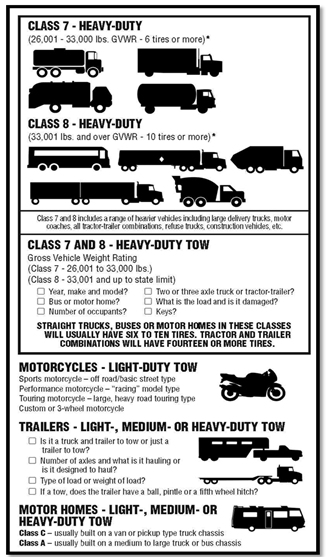Field Operations Guide for Safety/Service Patrols
Reference
Incident Management Structure
Responders use the National Incident Management System (NIMS), a common framework for effective resolution of incidents large and small, including traffic incidents.
National Incident Management System (NIMS)
NIMS was created by the Department of Homeland Security (DHS) under Homeland Security Presidential Directive (HSPD) 5. NIMS provides the framework for organizations to work together to prepare for, protect against, respond to, and recover from the entire spectrum of all-hazard events.
NIMS incorporates best practices currently in use by incident managers at all levels. It is the national standard for incident management across the various jurisdictions nationwide. Responders using the same standardized operational structures share a common focus and are able to place full emphasis on incident management.
In addition, national preparedness and readiness in responding to and recovering from an incident is enhanced because all of the Nation's emergency teams and authorities are using a common language and set of processes.
Incident Command System (ICS)
The ICS is one component of the larger NIMS framework.
ICS is the systematic tool for the command, control, and coordination of an emergency response. ICS allows agencies to work together using common terminology and operating procedures for controlling personnel, facilities, equipment, and communications at an incident scene.3
NIMS establishes ICS as a standard incident management organization with five functional areas: command, operations, planning, logistics, and finance/administration.
The principle of unified command has been universally incorporated into NIMS to ensure further coordination, especially during incidents involving multiple jurisdictions or agencies.
This unified command not only coordinates the efforts of many jurisdictions, but also provides for and assures joint decisions on objectives, strategies, plans, priorities, and public communications.
In major incidents, S/SP operators will be assigned to the Operations Section Chief, who often times is also the Incident Commander. The Operations Section Chief is responsible for implementing the Incident Action Plan (IAP) and manages all tactical activities. These activities include S/SP functions such as recovery, traffic control, vehicle spill cleanup, and other related operational functions.
 Diagram depicts the Traffic Incident Management Incident Command System for Safety Patrols. At the top of the hierarchy is the Incident Commander. The Public Information Officer, Safety Officer, and Liaison Officer report directly to the Incident Commander as second tier personnel. Third tier personnel, who also report directly to the Incident Commander, include the Operations Section Chief, the Planning Section Chief, the Logistics Section Chief, and the Finance/Admin Section Chief. Service Patrol Operators report to the Operations Section Chief.
Diagram depicts the Traffic Incident Management Incident Command System for Safety Patrols. At the top of the hierarchy is the Incident Commander. The Public Information Officer, Safety Officer, and Liaison Officer report directly to the Incident Commander as second tier personnel. Third tier personnel, who also report directly to the Incident Commander, include the Operations Section Chief, the Planning Section Chief, the Logistics Section Chief, and the Finance/Admin Section Chief. Service Patrol Operators report to the Operations Section Chief.
Figure 20. ICS Organizational Chart.
Traffic Incident Classification
Traffic incidents are classified in one of the following three categories as defined in the Manual on Uniform Traffic Control Devices (MUTCD):
- Major – expected duration greater than 2 hours.
- Intermediate – expected duration between 30 minutes and 2 hours.
- Minor – expected duration of less than 30 minutes.
Major traffic incidents are typically traffic incidents involving hazardous materials, fatal traffic crashes involving numerous vehicles, and other natural or man-made disasters. These traffic incidents typically involve closing all or part of a roadway facility for a period exceeding 2 hours.
Examples of major incidents include:
- Chain reaction crashes.
- Crashes that require a significant medical response, a coroner response, and/or a crash reconstruction response (e.g., fatality crashes).
- Incidents that involve advanced, prolonged environmental clean-up, such as hazardous materials incidents.
- Overturned tractor trailers.
- Complex commercial vehicle incidents with large debris fields or cargo fires.
- Structural damage.
- Wild fires near the roadway.
- Malevolent acts.
Intermediate traffic incidents typically affect travel lanes for 30 minutes to 2 hours and usually require traffic control at the scene to divert road users past the blockage. Full roadway closures may be necessary for short periods during traffic incident clearance to allow incident responders to accomplish their tasks.
Examples of intermediate traffic incidents include:
- Major roadway debris.
- Overturned cars, RVs, or small trailers.
- Multi-vehicle crashes.
- Commercial carrier crashes.
Minor traffic incidents are typically disabled vehicles and minor crashes that result in no lane closure or lane closures of less than 30 minutes. On-scene responders may include a combination of S/SP, law enforcement, fire, EMS, and towing companies.
Examples of minor traffic incidents include:
- Disabled vehicles in a travel lane or on the shoulder.
- Minor crashes that can be moved or relocated to the shoulder.
- Minor roadway debris.
Vehicle Identification Guide
Accurate communications between on-scene responders, dispatch, and towing and recovery operators describing an incident and the vehicles involved helps with the quick and efficient clearing of the incident scene.
Use the guide below to describe to dispatch the type of vehicle that is disabled and the nature of the problem to enable the wrecker company to determine what type of tow/recovery vehicle that should respond.4



Figure 21. Law Enforcement Vehicle Identification Guide.
Multilingual Assistance
Should you encounter a situation in which the person needing assistance speaks another language, you can use the following pages to help communicate with the motorist.
Each sheet's questions and answers match those on the English sheet.
- Determine which language the motorist speaks.
- Show the motorist the correct language page and ask them to indicate the problem being experienced.
- Compare their response to the list in English.
FREE SERVICE
ENGLISH
Dear Fellow Driver:
It appears that you are having difficulty with your automobile and although I do not speak (Spanish) (Italian) (French) (German) (Portuguese) or (Creole) I would like to offer my assistance. Please check the appropriate sentence below, so I will know how I may assist you.
_____ (1) I am out of gas
_____ (2) I have a flat tire and I do not have a spare
_____ (3) My engine stopped and I do not know the cause
_____ (4) I need a tow truck
_____ (5) I need police assistance
_____ (6) I need an ambulance
_____ (7) I am not having any difficulty
SERVICIO GRATIS
SPANISH (Español)
Estimado(a) conductor(a):
Me parece que tiene problema con su carro, pero yo no hablo español. Por favor señale lo que necesite para poder ayudarle.
_____ (1) Se me acabo el combustible
_____ (2) Se me poncho la llanta, y no tengo repuesto
_____ (3) Se paro el motor de mi carro y no se que tiene
_____ (4) Necesito un camion del remolque
_____ (5) Necesito ayuda de la policía
_____ (6) Necesito una ambulancia
_____ (7) No tengo ninguna dificultad
SERVICE LIBRE
FRENCH (Français)
Cher camarade de route,
Vous semblez avoir des d difficultés avec votre voiture. Bien que je ne parle pas français, j'aurais bien voulu vous aider. Veuillez-vous atterrer l'attention sur la liste ci-dessous et identifier l'article que vous convient.
_____ (1) Je n'ai plus d'essence.
_____ (2) J'ai un pneu plat et je n'ai pas des pièces de rechange.
_____ (3) Mon moteur est arrête et j'ignore pourquoi.
_____ (4) J'ai besoin d'un camion de remorquage
_____ (5) J'ai besoin de l'aide de police
_____ (6) J'ai besoin d'une ambulance
_____ (7) Je n'ai pas des difficulté
FREIER SERVICE
GERMAN (Deutsch)
Hallo autofahrer
Es erscheint, dass Sie Schwierigkeit mit Ihrem Automobil haben, und, obwohl ich Deutsch nicht spreche, das ich meiner Hilfe anbieten möchte. Prüfen Sie bitte den passenden Satz unten, deshalb werde ich wissen, wie ich Ihnen helfen kann.
_____ (1) Ich bin aus Gas
_____ (2) Ich habe einen flachen Reifen und ich habe keinen Ersatzteil
_____ (3) Meine Maschine hat aufgehalten und ich weiss die Ursache nicht
_____ (4) Ich brauche einen Abschleppen Lastwagen
_____ (5) Ich muss Hilfe reglementieren
_____ (6) Ich brauche einen Krankenwagen
_____ (7) Ich bin ohne irgendeine Schwierigkeit
SERVIZIO LIBERO
ITALIAN (Italiano)
Caro Autista:
Sembra che stiate avendo difficoltà con la vostra automobile. Non parlo italiano ma vorrei offrire la mia assistenza. Controlli prego la frase adatta qui sotto, in modo da saprò posso aiutarlo.
_____ (1) Sono da benzina
_____ (2) Ho una gomma piana e non ho parti di recambio
_____ (3) Il mio motore bloccato ed io non conoscono la causa
_____ (4) Ho bisogno di un camion di rimorchio
_____ (5) Ho bisogno dell'assistenza della polizia
_____ (6) Ho bisogno di un'ambulanza
_____ (7) Sono senza alcuna difficoltà
SERVICE LIBRE
Créole/Kreyol
Chè Chofè
Ou gen problem avek machine-la? Malgré mwen pa palé kréyol, mwen ta renmen édé-ou. Sou plé, gadé lis amba-a é chwazi ki problem ou genyen.
_____ (1) Mwen pa gen gaz
_____ (2) Karochou machin-n la plat é mwen pa gen déréchanj
_____ (3) Motè machin-n la kampé é mwen pa konnen pou ki sa
_____ (4) Mwen bezwen yon gwo kamyon pou alé-m
_____ (5) Mwen bezwen èd polis
_____ (6) Mwen bezwen yon anbilans
_____ (7) Mwen pa gen anken-n problem
SERVIÇO LIVRE
PORTUGUESE (Portuguese)
Caro Motorista:
Parece que você está tendo a dificuldade com seu automóvel. Eu não falo o português mas gostaria de ajudá-lo. Por favor, leia as sentenças abaixo e indique qual é a mais propria para o seu caso, para que eu possa saber como ajudá-lo.
_____ (1) Eu estou sem gasolina
_____ (2) Meu pneu está furado e eu não tenho sobressalentes
_____ (3) Meu motor parou e eu não sei porque
_____ (4) Eu preciso de um caminhão do reboque
_____ (5) Eu preciso de ajuda da policia
_____ (6) Eu preciso de uma ambulância
_____ (7) Eu não preciso de ajuda
Coverage Map

Figure 22. Sample Coverage Map
Important Contacts
| Contact Type | Name / Title | Phone /Email/ Cell |
|---|---|---|
| Safety Patrol Supervisor | ||
| Safety Patrol Manager | ||
| Dispatch | ||
| TMC / TOC | ||
| Fire Rescue | ||
| State Police | ||
| Local Police / Sheriff | ||
| Maintenance | ||
| Public Works / DOT | ||
| Traffic | ||
| Public Works / DOT | ||
| Towing and Recovery | ||
| HazMat Notification | ||
| Animal Control | ||
| Emergency Management | ||
| Public Safety Answering Point | Emergency call center |
Terms and Acronyms
| AED | Automated External Defibrillator |
| AIS | Accident Investigation Site |
| AVL | Automated Vehicle Location |
| CCTV | Closed Circuit Television |
| CMS | Changeable Message Sign |
| CPR | Cardiopulmonary Resuscitation |
| DHS | Department of Homeland Security |
| DMS | Dynamic Message Sign |
| DOT | Department of Transportation |
| EMS | Emergency Medical Services |
| ERG | Emergency Response Guidebook |
| FFSP | Full Function Service Patrol |
| FHWA | Federal Highway Administration |
| FOG | Field Operators Guide |
| HSPD | Homeland Security Presidential Directive |
| ICS | Incident Command System |
| ITS | Intelligent Transportation Systems |
| LZ | Helicopter Landing Zone |
| MP | Mile post |
| MSDS | Material Safety Data Sheet |
| MUTCD | Manual on Uniform Traffic Control Devices |
| NIMS | National Incident Management System |
| PA | Public Address loudspeaker |
| PSAP | Public Safety Answering Point |
| TIM | Traffic Incident Management |
| TMC | Traffic (or Transportation) Management Center |
| TIMA | Traffic Incident Management Area |
| TOC | Traffic (or Transportation) Operations Center |
| TRAA | Towing and Recovery Association of America |
| TTC | Temporary Traffic Control |
| UC | Unified Command |
3 Federal Highway Administration, Simplified Guide to the Incident Command System for Transportation Professionals, FHWA-HOP-06-004 (Washington DC: February 2006).
4 Guide content reproduced with permission of Towing and Recovery Association of America (Copyright 2009© TRAA). Graphics and artwork reproduced with permission of Tow Times magazine. (Alexandria, VA).